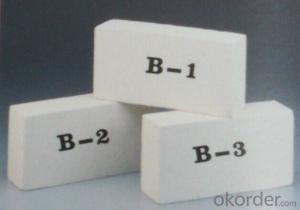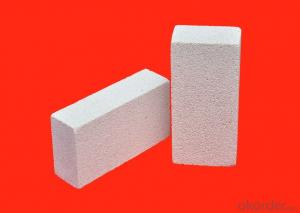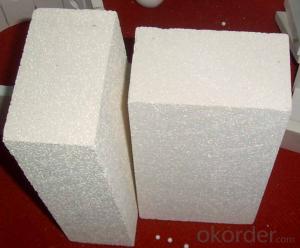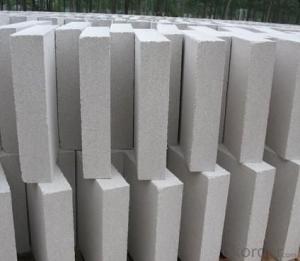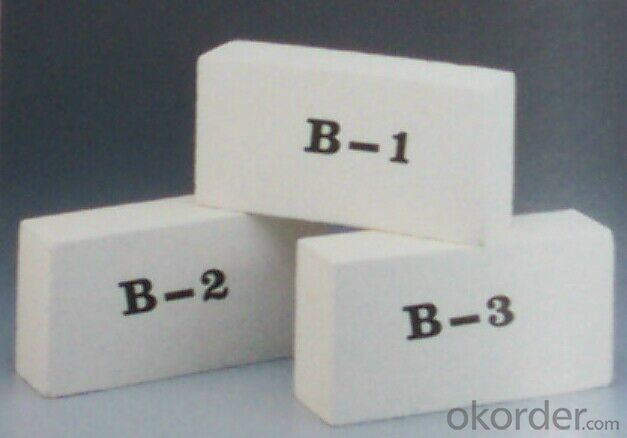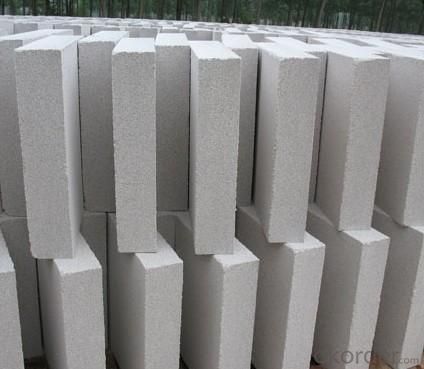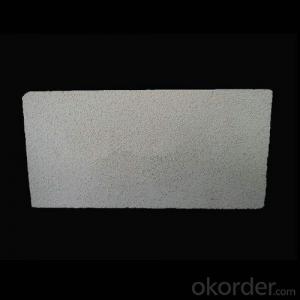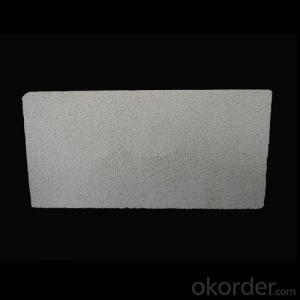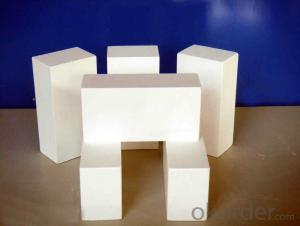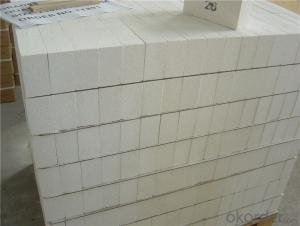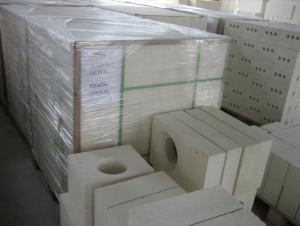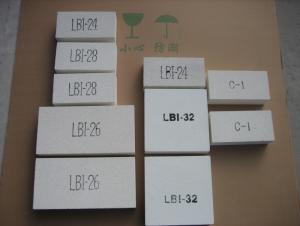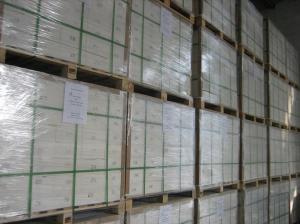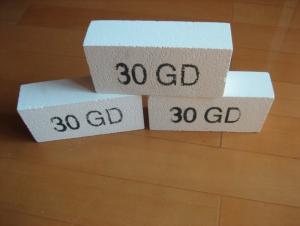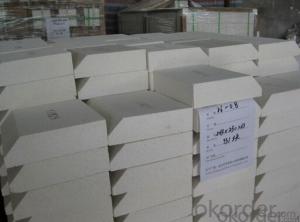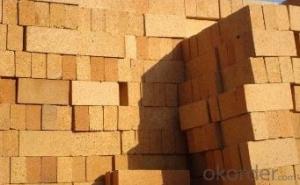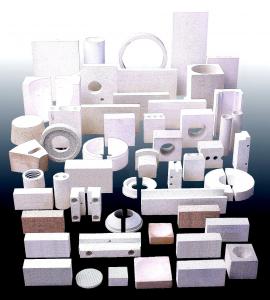Insulating Fire Brick - Refractory Mullite Insulating Refractory Brick JM 23
- Loading Port:
- Shanghai
- Payment Terms:
- TT OR LC
- Min Order Qty:
- 20 m.t.
- Supply Capability:
- 20 m.t./month
OKorder Service Pledge
OKorder Financial Service
You Might Also Like
Okorder series heat insulation brick
Okorder series thermal insulation brick is an effective, energy saving, low carbon, environmental protection advanced, according to the ASTM standard manufacturing products. Okorder series products have all kinds of materials in the field of metallurgy, industrial furnaces, aluminum, the best Li Ning petrochemical and insulation, electric power and glass ceramics. They can be used as part of an insulation or not to melt. Products have been widely used in the following furnace, achieved satisfactory results.
Application of heat preservation brick
Metallurgical Industry: blast furnace, hot blast furnace, heating furnace, etc..
Petrochemical Industry: ethylene cracking furnace, hydrogen furnace, the main furnace, heating furnace, etc..
Ceramic industry: roller kiln, kiln, etc..
Glass industry: glass furnace regenerator, etc.
Carbon industry: carbon furnace, etc..
Aluminum electrolysis industry: aluminum reduction cell, etc.
Other industries: tunnel kiln, shuttle kiln, etc..
Advantages of heat insulation brick
Low thermal conductivity: many air holes will bring good thermal insulation effect, energy saving.
High crushing strength: high crushing strength, volume stability.
Low heat storage: small heat storage, absorb more heat, energy-saving effect is obvious.
Chundu: High-speed Rail, low content of alkali metal impurities.
Accuracy: the size of the brick machining precision, cutting and grinding the special shape, speed up the brick.
Technical Data
ITEM | GJM30 | GJM28 | GJM26 | GJM23 |
Classification Temperature, ℉/℃ | 3000/1650 | 2800/1540 | 2600/1430 | 2300/1260 |
Bulk Density,g/cm³ | ≤1.0 | ≤0.9 | ≤0.8 | ≥0.5 |
Reheating Linear Change, % | ≤0.9 (1550℃,12 h) | ≤0.8 (1510℃,12 h) | ≤0.7 (1410℃,12 h) | ≤0.5 (1230℃,12 h) |
Al2O3 Content, % | ≥75 | ≥65 | ≥55 | ≥45 |
Fe2O3 Content, % | ≤0.5 | ≤0.6 | ≤0.7 | ≤1.0 |
Thermal Conductivity: | ||||
800℃, w/m.k | ≤0.39 | ≤0.37 | ≤0.35 | ≤0.18 |
1000℃, w/m.k | ≤0.43 | ≤0.41 | ≤0.39 | ≤0.20 |
1200℃, w/m.k | ≤0.48 | ≤0.46 | ≤0.43 | --- |
Insulating brick
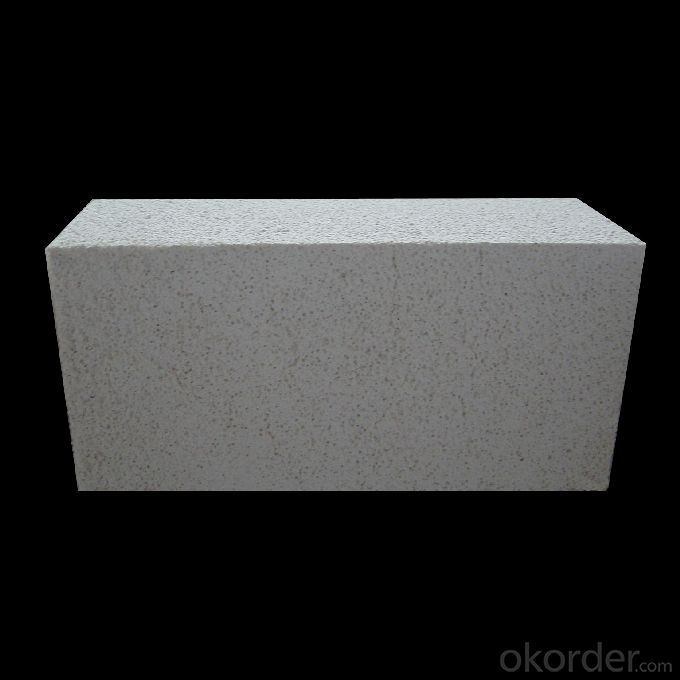
- Q: Are insulating fire bricks easy to cut or shape?
- Compared to other bricks, insulating fire bricks offer a relatively simple cutting and shaping process. This is mainly because of their lower density and composition, enabling easier manipulation using standard masonry tools. However, it is crucial to acknowledge that the level of simplicity can differ depending on the specific type and brand of insulating fire brick. Some may demand special tools or techniques for cutting or shaping, while others may be more user-friendly. To ensure accurate cutting or shaping techniques, it is always advisable to refer to the manufacturer's instructions or seek professional guidance when working with insulating fire bricks.
- Q: Can insulating fire bricks be used to line industrial boilers?
- Yes, insulating fire bricks can be used to line industrial boilers. Insulating fire bricks are designed to withstand high temperatures and provide excellent insulation properties. They are commonly used in industrial applications, including lining furnaces, kilns, and boilers, to reduce heat loss and improve energy efficiency.
- Q: Do insulating fire bricks require a protective coating?
- A protective coating is not always essential for insulating fire bricks, given their inherent ability to endure high temperatures and provide insulation. These bricks are composed of lightweight refractory materials with exceptional thermal conductivity characteristics, enabling them to retain heat and inhibit heat transfer. However, in certain instances where the bricks may be exposed to corrosive substances or aggressive chemicals, it may be advisable to apply a protective coating to enhance their longevity and resilience. Ultimately, the necessity of a protective coating hinges on the particular application and surrounding environment in which the insulating fire bricks are employed.
- Q: Can insulating fire bricks be used in high-temperature filters?
- Insulating fire bricks have the capability to be utilized in high-temperature filters. These bricks are specifically engineered to endure exceedingly high temperatures, typically reaching up to 3000°F (1650°C). They possess remarkable thermal insulation properties, low thermal conductivity, and high resistance to thermal shock, rendering them highly suitable for applications involving elevated temperatures. In the context of high-temperature filters, insulating fire bricks can be employed to construct the filter's framework, ensuring its endurance against the intense heat generated. These bricks can be arranged in such a manner that enables efficient filtration of gases or liquids while upholding their structural integrity under high temperatures. Additionally, the insulating properties of these bricks aid in minimizing heat loss and maximizing energy efficiency. Furthermore, insulating fire bricks often exhibit chemical inertness and possess commendable resistance to corrosive substances, thus making them appropriate for implementation in various industrial processes that entail the filtration of aggressive or hazardous materials at elevated temperatures. Overall, the utilization of insulating fire bricks in high-temperature filters offers a dependable and long-lasting solution for filtration applications that necessitate resistance to extreme temperatures.
- Q: Do insulating fire bricks have any impact on indoor air quality?
- Insulating fire bricks do not have any direct impact on indoor air quality. These bricks are made from materials that are generally inert and do not release any harmful substances or volatile organic compounds into the air. However, it is important to note that the overall indoor air quality can be influenced by various factors, such as the presence of other materials, pollutants, or ventilation systems in the surrounding environment.
- Q: Are insulating fire bricks resistant to metal penetration?
- Insulating fire bricks possess a general resistance to the penetration of metal. These bricks are composed of refractory materials with high melting points and are engineered to endure elevated temperatures. Their application is often found in environments subject to extreme heat, such as furnaces and kilns. The thermal conductivity of insulating fire bricks is low, denoting their effectiveness in impeding heat transfer. This characteristic aids in maintaining a cool outer surface for the bricks, even when the interior is subjected to intense heat. Consequently, such bricks exhibit the ability to withstand the infiltration of molten metal. Nonetheless, it is worth noting that the resistance of insulating fire bricks to metal penetration varies according to the individual composition and quality of the bricks. Inferior-grade bricks may not offer the same level of resistance as their higher-quality counterparts. Furthermore, the duration and intensity of exposure to heat can also influence the bricks' resistance. In conclusion, while insulating fire bricks generally exhibit resistance to metal penetration, it is vital to consider the specific attributes and quality of the bricks employed, as well as the conditions under which they are exposed to heat.
- Q: Can insulating fire bricks be used in the construction of lime production kilns?
- Yes, insulating fire bricks can be used in the construction of lime production kilns. Lime production kilns require high temperatures to convert limestone into lime, and insulating fire bricks are known for their ability to withstand and retain high temperatures. These bricks have high insulating properties, allowing the kiln to reach the desired temperature quickly and efficiently, while also minimizing heat loss during the production process. Insulating fire bricks are also lightweight and easy to handle, making them suitable for use in the construction of lime production kilns. Additionally, these bricks have good thermal shock resistance, meaning they can withstand rapid temperature changes without cracking or breaking, which is crucial in the kiln environment. Overall, the use of insulating fire bricks in the construction of lime production kilns can help optimize the efficiency and effectiveness of the lime production process.
- Q: Can insulating fire bricks be used in kilns or furnaces?
- Yes, insulating fire bricks can be used in kilns or furnaces. These bricks are designed to withstand high temperatures and provide excellent thermal insulation, making them suitable for lining kilns and furnaces to enhance energy efficiency and maintain high temperatures.
- Q: Can insulating fire bricks be used in heat exchangers?
- Yes, insulating fire bricks can be used in heat exchangers. Insulating fire bricks are designed to have excellent thermal insulation properties, which makes them suitable for use in high-temperature applications such as heat exchangers. These bricks are made from lightweight materials and have low thermal conductivity, allowing them to effectively reduce heat loss or gain in the heat exchanger. Additionally, insulating fire bricks have high resistance to thermal shock and can withstand extreme temperatures, making them a reliable choice for heat exchanger applications. Overall, using insulating fire bricks in heat exchangers can contribute to improved energy efficiency and performance.
- Q: Can insulating fire bricks be used in the construction of glass melting furnaces?
- Yes, insulating fire bricks can be used in the construction of glass melting furnaces. Insulating fire bricks are designed to have a high resistance to heat and are capable of withstanding extremely high temperatures. They have low thermal conductivity, which means they can effectively retain heat and minimize heat loss. In glass melting furnaces, where temperatures can reach up to 1600°C (2912°F) or even higher, insulating fire bricks play a crucial role in maintaining the desired temperature inside the furnace. By using insulating fire bricks as the furnace lining, the heat generated during the melting process can be efficiently contained within the furnace, allowing for better energy efficiency and reduced heat loss. Furthermore, insulating fire bricks are lightweight and have good thermal shock resistance, which makes them ideal for use in glass melting furnaces where rapid temperature changes are common. This ensures that the bricks will not crack or break under the extreme conditions of the furnace. Overall, the use of insulating fire bricks in the construction of glass melting furnaces provides better insulation, energy efficiency, and durability, making them a suitable choice for this application.
Send your message to us
Insulating Fire Brick - Refractory Mullite Insulating Refractory Brick JM 23
- Loading Port:
- Shanghai
- Payment Terms:
- TT OR LC
- Min Order Qty:
- 20 m.t.
- Supply Capability:
- 20 m.t./month
OKorder Service Pledge
OKorder Financial Service
Similar products
Hot products
Hot Searches
Related keywords
